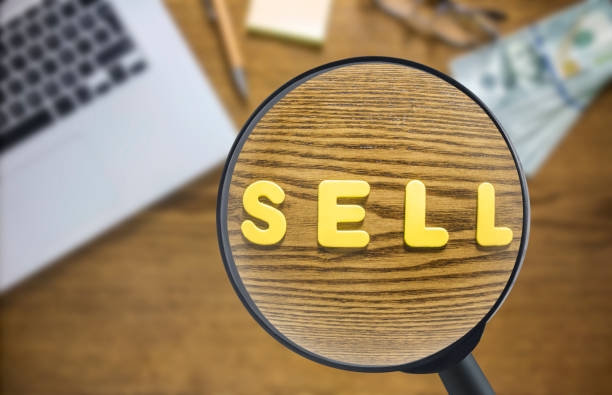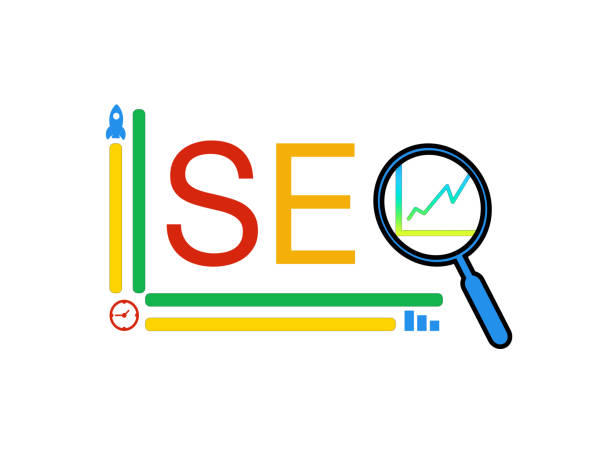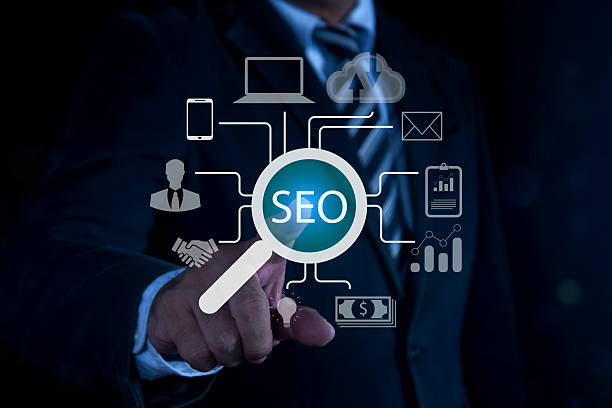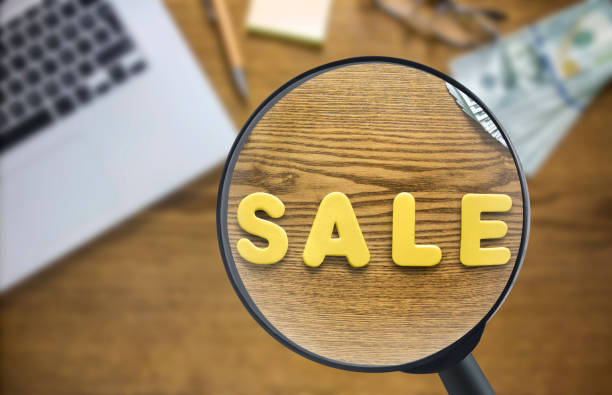What is On-Page SEO and why is it important?

What is On-Page SEO and why is it important?
#On-Page SEO refers to a set of actions performed within your website to improve its ranking in search engines like Google.
These actions include optimizing content, site structure, title tags, meta descriptions, and more.
The importance of on-page SEO lies in helping search engines better understand your content and present it to relevant users.
Without on-page SEO optimization, your efforts in Off-Page SEO and Content Marketing alone will not be sufficient.
A strong SEO strategy is built upon strong On-Page SEO.
On-page SEO helps you gain more control over your site’s ranking and attract more organic traffic by improving the quality and relevance of your content.
On-page SEO is one of the main pillars for increasing website visits and improving user experience.
Does your current website build the trust that potential customers should have in your business? If the answer is no, it’s time to have your professional and impactful corporate website with Rasawp.
✅ Fully customized design tailored to your brand identity
✅ Increased lead generation and business credibility in the eyes of customers⚡ Contact us for a free consultation!
Keyword Research: The Cornerstone of On-Page SEO

Keyword Research: The Cornerstone of On-Page SEO
Keyword Research is the first step in an on-page SEO strategy.
You need to find the words that users employ to search for products, services, or information related to your business.
Various tools are available for this purpose, such as Google Keyword Planner, Ahrefs, and Semrush.
After identifying keywords, you should prioritize them based on Search Volume and Competition.
Keywords with high search volume and low competition are the best options to target.
These keywords should be used in page titles, meta descriptions, content text, and image alt tags.
Remember that excessive use of keywords (Keyword Stuffing) can harm your site’s ranking.
The main goal should be to provide valuable and relevant content to users, not merely to fill the page with keywords.
Principle-based on-page SEO begins with targeted keyword research and significantly impacts increasing website traffic.
Optimizing Page Title (Title Tag) and Meta Description
![]()
Optimizing Page Title (Title Tag) and Meta Description
The page title (Title Tag) and meta description are two important elements in on-page SEO that are displayed to users in search results.
The page title should be short, engaging, and contain the main keyword of the page.
The length of the page title should not exceed 60 characters.
The meta description should be an enticing summary of the page’s content, encouraging users to click.
The length of the meta description should not exceed 160 characters.
The title and meta description should be unique for each page.
Using relevant keywords in the title and meta description helps search engines better understand the page’s topic and show it to relevant users.
Additionally, these elements can increase the click-through rate (CTR) of the page in search results.
Optimizing titles and meta descriptions is a fundamental step in on-page SEO and has a significant impact on organic site traffic.
| Element | Description | Best Practice |
|---|---|---|
| Page Title (Title Tag) | Text displayed in the browser tab and search results. | Short, engaging, contains primary keyword |
| Meta Description | A brief summary of the page’s content. | Engaging, enticing, contains relevant keywords |
Content Optimization: Creating Valuable and Engaging Content

Content Optimization: Creating Valuable and Engaging Content
Content is King! Creating valuable and engaging content is one of the most important factors for success in on-page SEO.
Your content should answer user questions, solve their problems, and provide useful information.
Content should be produced regularly and with high quality.
Use relevant keywords in the content text, but avoid overusing them.
Your content should be readable and understandable.
Use short paragraphs, headings, and subheadings to divide the text into smaller sections.
Use images, videos, and other multimedia elements to make the content more engaging.
Your content must be unique, and you should avoid copying content from others.
Search engines do not value duplicate content and do not consider it in their rankings.
Content optimization is a continuous process, and you should regularly update and improve your content.
Efficient on-page SEO is achieved by producing valuable and distinct content.
Does your current site display your brand’s credibility as it should? Or does it drive potential customers away?
Rasawp, with years of experience in designing professional corporate websites, is your comprehensive solution.
✅ A modern, beautiful, and tailored website that matches your brand identity
✅ Significant increase in lead generation and new customers
⚡ Contact Rasawp now for a free corporate website design consultation!
Image Optimization: Reducing Size and Using Alt Tags

Image Optimization: Reducing Size and Using Alt Tags
Images can play a significant role in content attractiveness and better understanding.
However, large image sizes can decrease page loading speed and affect user experience.
To optimize images, you must reduce their size without compromising quality.
Various tools are available for this, such as TinyPNG and ImageOptim.
Additionally, you should use Alt tags to describe images.
Alt tags help search engines understand image content and display them in search results.
The Alt tag should be short, relevant, and contain the image’s main keyword.
Image filenames should also be relevant and contain keywords.
Image optimization is an important step in on-page SEO and can help improve page loading speed and increase site ranking in search results.
Strong on-page SEO pays special attention to image optimization.
URL Structure: Creating Short and Meaningful URLs
![]()
URL Structure: Creating Short and Meaningful URLs
The URL (Uniform Resource Locator) structure, or the address of web pages, is another important factor in on-page SEO.
Your URLs should be short, meaningful, and contain the main keyword of the page.
Avoid using long and complex URLs.
URLs should be readable and understandable.
Use hyphens (-) to separate words in the URL.
URLs should be logically organized and reflect the site’s hierarchical structure.
For example, a product page URL should include the product category.
Optimizing URL structure helps search engines better understand your site’s pages and show them to relevant users.
Additionally, short and meaningful URLs help users easily remember and return to your site’s pages.
On-page SEO emphasizes logical and optimized URL structures.
Internal Linking: Creating Connections Between Site Pages

Internal Linking: Creating Connections Between Site Pages
Internal Linking refers to creating links between different pages of your website.
Internal linking helps search engines better understand your site’s structure and identify more important pages.
Additionally, internal linking helps users easily navigate your site and find relevant content.
When performing internal linking, you should use appropriate anchor text.
The anchor text should be relevant to the destination page’s content and include the page’s main keyword.
Avoid linking to unrelated pages.
Internal linking should be done naturally and logically.
The primary goal should be to provide a better user experience, not merely to improve the site’s ranking in search engines.
Internal linking is a powerful tool in on-page SEO that can help improve site ranking and increase traffic.
| Link Type | Description | Example |
|---|---|---|
| Link to Homepage | Link to the website’s homepage | Homepage |
| Link to Category | Link to a product or article category page | SEO Articles |
| Link to Product/Article | Link to a specific product or an article | On-Page SEO Tutorial |
Website Speed Optimization: Providing an Excellent User Experience

Website Speed Optimization: Providing an Excellent User Experience
Website Speed is an important factor in SEO and user experience.
Users expect web pages to load quickly.
If your site is slow, users may leave and go to competitor sites.
To optimize site speed, you need to consider various factors, such as reducing image size, using caching, optimizing code, and using a CDN (Content Delivery Network).
Various tools are available for testing site speed, such as Google PageSpeed Insights and GTmetrix.
By using these tools, you can identify and resolve your site’s speed issues.
Optimizing site speed not only helps improve user experience but can also increase your site’s ranking in search engines.
Advanced on-page SEO places great importance on website load speed.
Does your current website build the trust that potential customers should have in your business? If the answer is no, it’s time to have your professional and impactful corporate website with Rasawp.
✅ Fully customized design tailored to your brand identity
✅ Increased lead generation and business credibility in the eyes of customers⚡ Contact us for a free consultation!
Responsive Design: Compatibility with Various Devices

Responsive Design: Compatibility with Various Devices
Responsive Design means that your site should automatically adapt to the screen size of various devices, such as computers, tablets, and mobile phones.
Today, many users access the internet via mobile devices.
If your site is not optimized for mobile, users may have a poor user experience and leave your site.
Google also prioritizes sites that are optimized for mobile.
To implement responsive design, you should use CSS frameworks like Bootstrap.
Additionally, you should optimize your images and videos for different devices.
Responsive design is a necessity for on-page SEO and can help improve user experience and increase site ranking in search engines.
Modern on-page SEO considers responsive design a necessity.
Using Schema Markup: Helping Search Engines Better Understand Content

Using Schema Markup: Helping Search Engines Better Understand Content
Schema Markup is a type of code that allows you to provide more information about your page’s content to search engines.
By using Schema Markup, you can tell search engines whether a page is about a product, a recipe, an event, or an article.
This information helps search engines better understand your page’s content and display it more richly in search results.
For example, if you use Schema Markup for a product page, search engines can display the product’s price, availability, and rating in search results.
Using Schema Markup can increase your page’s click-through rate (CTR) in search results and attract more organic traffic.
Professional on-page SEO, by using schema markup, can provide accurate information to search engines and improve site ranking.
Good on-page SEO means a correct understanding and proper use of Schema Markup.
Frequently Asked Questions
| Question | Answer |
|---|---|
| What is Meta Title and why is it important in on-page SEO? | The meta title is the most important on-page SEO element displayed at the top of the browser tab and in search results. It helps search engines and users understand the main topic of the page and should include the primary keyword. |
| What role does Meta Description play in on-page SEO? | The meta description is a short summary of the page’s content displayed below the title in search results. Although it doesn’t directly impact rankings, its attractiveness can increase the click-through rate (CTR). |
| How should keywords be used in page content? | Keywords should be used naturally and relevantly in strategic places such as the title, headings, first paragraph, and body text. Avoid excessive keyword stuffing. |
| What is the importance of quality and comprehensive content in on-page SEO? | High-quality, unique, informative, and comprehensive content that addresses user needs is of paramount importance. Search engines give higher rankings to content that provides real value. |
| What is the use of heading tags (H1-H6) in on-page SEO structure? | Heading tags (H1, H2, H3, etc.) are used to structure content and indicate the importance of different sections. H1 is the main title of the page, and each page should only have one H1. Other tags are used for subheadings. |
| How can we optimize images to improve on-page SEO? | To optimize images, use descriptive alternative text (Alt Text) that includes relevant keywords, reduce the image file size without sacrificing quality, and use meaningful and relevant filenames. |
| What are the characteristics of an SEO-friendly URL for on-page SEO? | A friendly URL should be short, readable, descriptive, include primary keywords, and be free of extra characters. The URL structure should be hierarchical and logical to be understandable for both users and search engines. |
| How does Internal Linking help with on-page SEO? | Internal linking, by connecting related pages, helps users and search engine crawlers better understand the site’s structure, transfer page authority, and increase user dwell time on the site. |
| What is the impact of page load speed on on-page SEO? | High loading speed is crucial for both user experience and SEO ranking. Slower pages may be ignored by search engines and lead to an increased bounce rate. |
| Why is Mobile-Friendliness very important in on-page SEO? | Given the increasing number of searches via mobile devices, having a responsive and mobile-friendly site is crucial for user experience and ranking in search results (Google’s mobile-first indexing). |
And other services of Rasa Web Advertising Agency in the field of advertising
- Smart Digital Advertising: A combination of creativity and technology to increase click-through rates through Google Ads management.
- Smart Google Ads: An innovative platform to improve customer behavior analysis with intelligent data analysis.
- Smart SEO: An effective tool for online growth with the help of Google Ads management.
- Smart Marketing Automation: A specialized service for sales growth based on the use of real data.
- Smart Customer Journey Map: Designed for businesses seeking online growth through user experience customization.
And over hundreds of other services in the field of internet advertising, advertising consulting, and organizational solutions
Internet Advertising | Advertising Strategy | Advertorial
Resources
On-Page SEO Guide on IranSEOContent SEO: A Complete GuideSEO Training for BeginnersAdvanced On-Page SEO Techniques
? Are you ready to transform your business in the digital world? Rasawp Afarin, your expert partner in digital marketing agency, accompanies you on the path to growth and visibility by providing innovative and effective solutions including multilingual website design, SEO, and advertising campaign management.
📍 Tehran, Mirdamad Street, next to Central Bank, Southern Kazeroun Alley, Ramin Alley, No. 6
